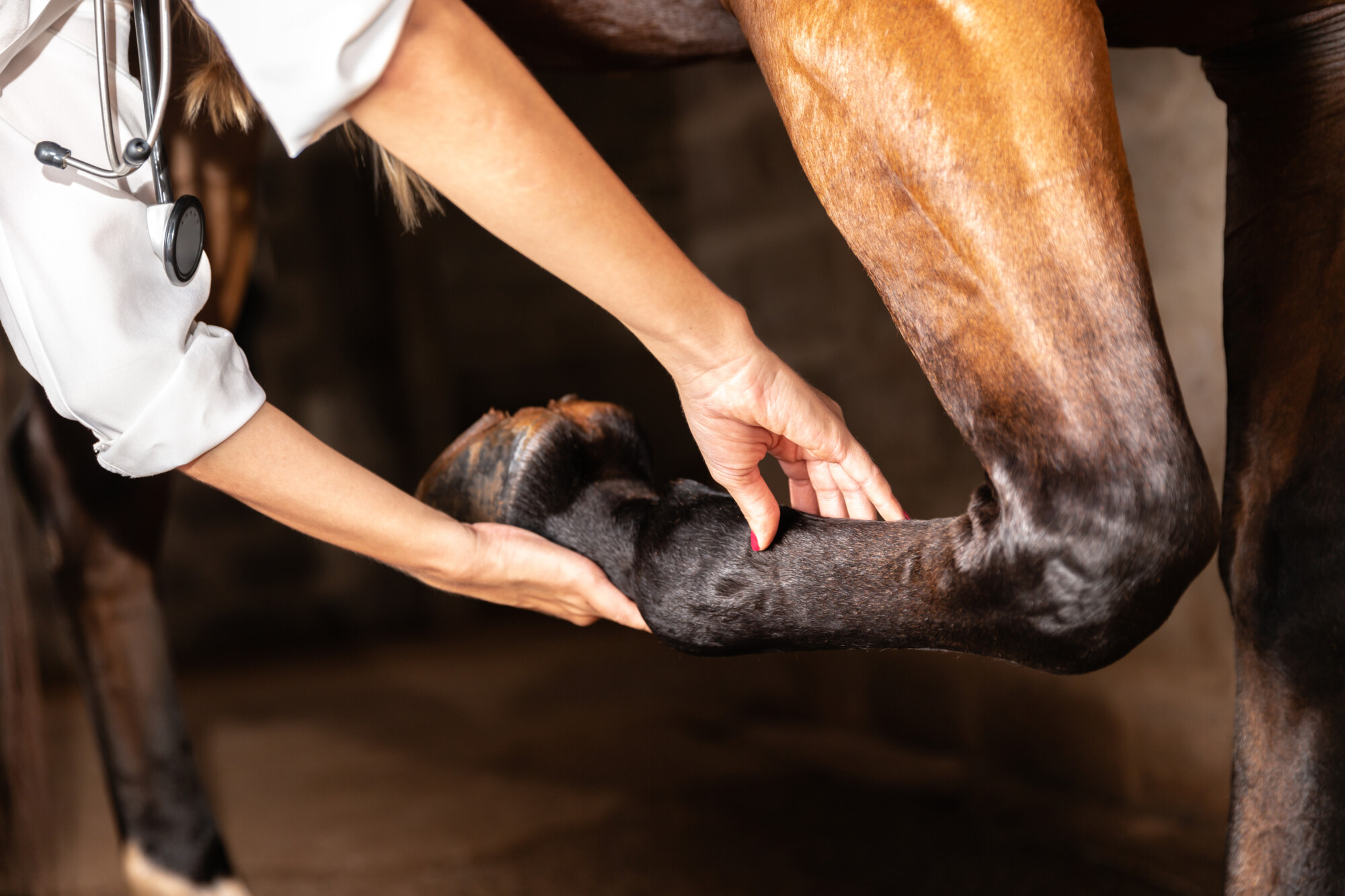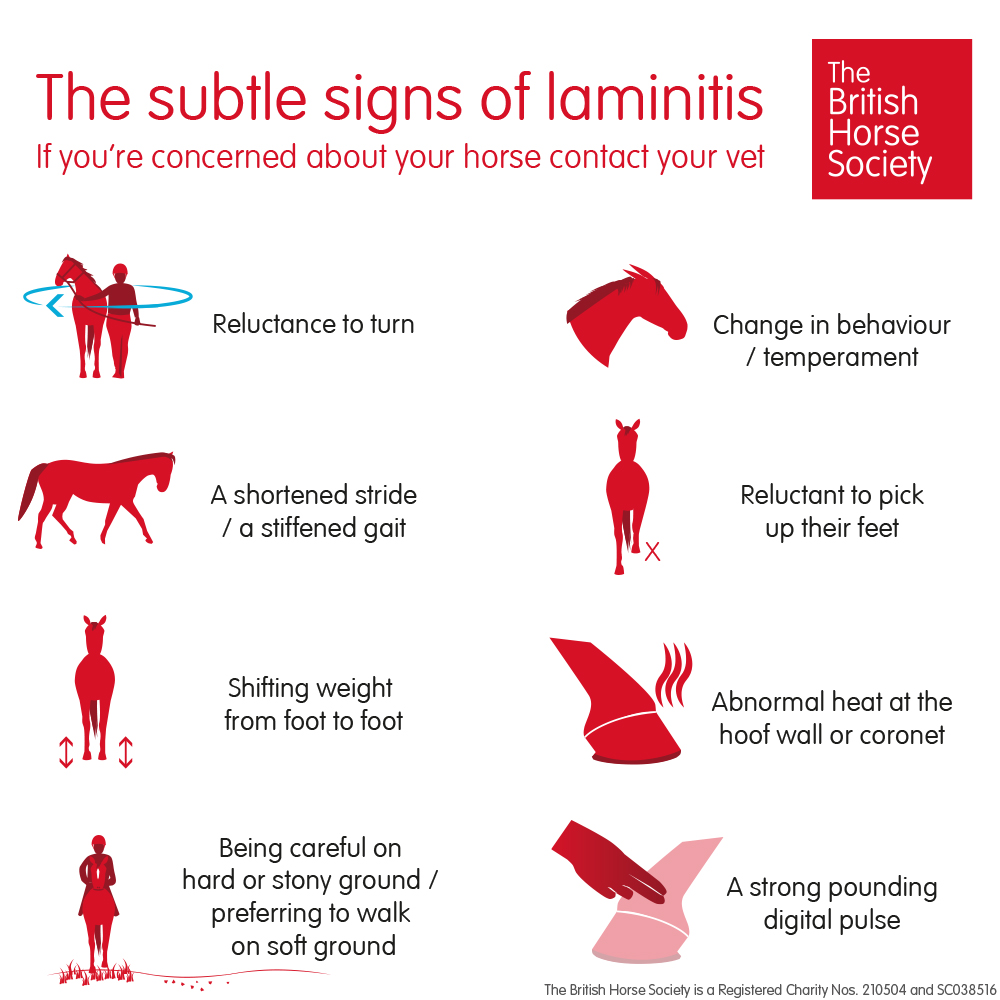The subtle signs of laminitis – what to look for
5th July 2021
Farmers Guide spoke with The British Horse Society to find out more about laminitis.

What is laminitis?
It is an extremely painful condition affecting 1 in 10 horses/ponies every year and can cause permanent damage to the hooves.
Laminitis can affect any horse, pony, donkey or hybrid at any time of the year and not just in spring – there is no ‘safe season’. It affects tissue called sensitive laminae which are found in the horse’s hoof. The sensitive laminae act like Velcro to form a strong bond to hold the pedal bone in place within the hoof.

Credit: The British Horse Society.
Laminitis causes the sensitive laminae to stretch, weaken and become damaged which can cause the pedal bone to move within the hoof (for example, think of a zip being undone).
Causes
Certain circumstances can contribute to the likelihood of your horse developing the condition. Overweight horses or those that have previously suffered from laminitis are more susceptible. Weight gain more than doubles the risk of the condition.
Laminitis should be thought of as a sign of a disease rather than a disease itself. This means the cause needs to be investigated and then managed to help prevent future episodes. The causes of laminitis fall into three broad categories:
Hormonal Laminitis – two types of hormonal conditions that can contribute to laminitis are Equine Cushing’s Disease and Equine Metabolic Syndrome (EMS).
Although it is currently unclear how these conditions actually cause laminitis, both diseases are associated with high levels of insulin in the bloodstream which is known to cause the condition.
If your horse develops laminitis it is recommended that you test for Cushing’s Disease and assess body condition to determine whether EMS is present. Your vet will be best to advise on your specific circumstance.
Inflammatory Laminitis – If you feed concentrates as well as forage, this should be no more than is needed to provide the required energy for your horse and should be limited to 150-200 grams per 100 kilograms of body weight per meal. To aid digestion it is advised to spread the daily concentrate ration over at least two meals a day. Speak to your vet or a nutritionist for further information on the specific dietary requirements for your horse.
Eating a large amount of concentrates in one go can cause an overload in the digestive system with undigested sugar and starch pushed through to the hindgut, where it starts to rapidly break down. This process can damage the gut leading to the absorption of toxins into the bloodstream. It is thought that the toxins may disrupt the blood supply to the laminae and increase the risk of laminitis.
Abnormal weight bearing laminitis – Abnormal weight bearing laminitis can be caused when a horse has a condition or injury where it is unable to put weight on a leg so uses the opposite leg to support its weight. Laminitis can occur in the hoof taking the extra weight.
Gemma Stanford, Director of Welfare for The British Horse Society, said: “Laminitis is a serious, debilitating condition of the foot that can significantly compromise an equine’s welfare by causing excruciating pain and immobility. Our trained BHS Welfare Advisers deal with around 1,500 welfare concerns every year and laminitis is a common concern. Research indicates that one in 10 horses or ponies may develop at least one laminitic episode each year. We also know that weight gain more than doubles the risk of a horse developing laminitis. It’s crucial for horse owners to know the subtle signs of laminitis and put the correct management practices in place to prevent it.”
If you’d like to read more about laminitis, please visit The British Horse Society for more information.
